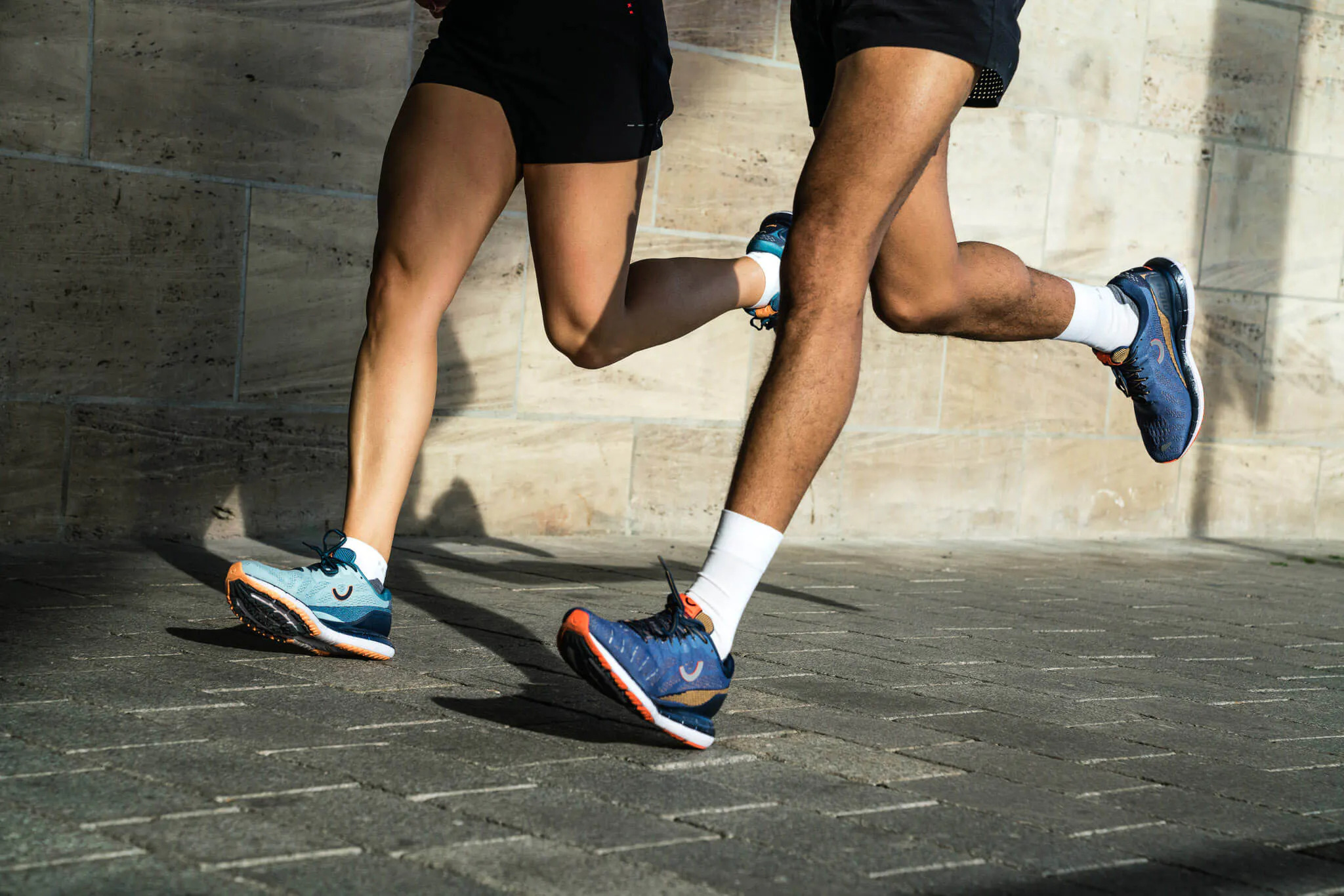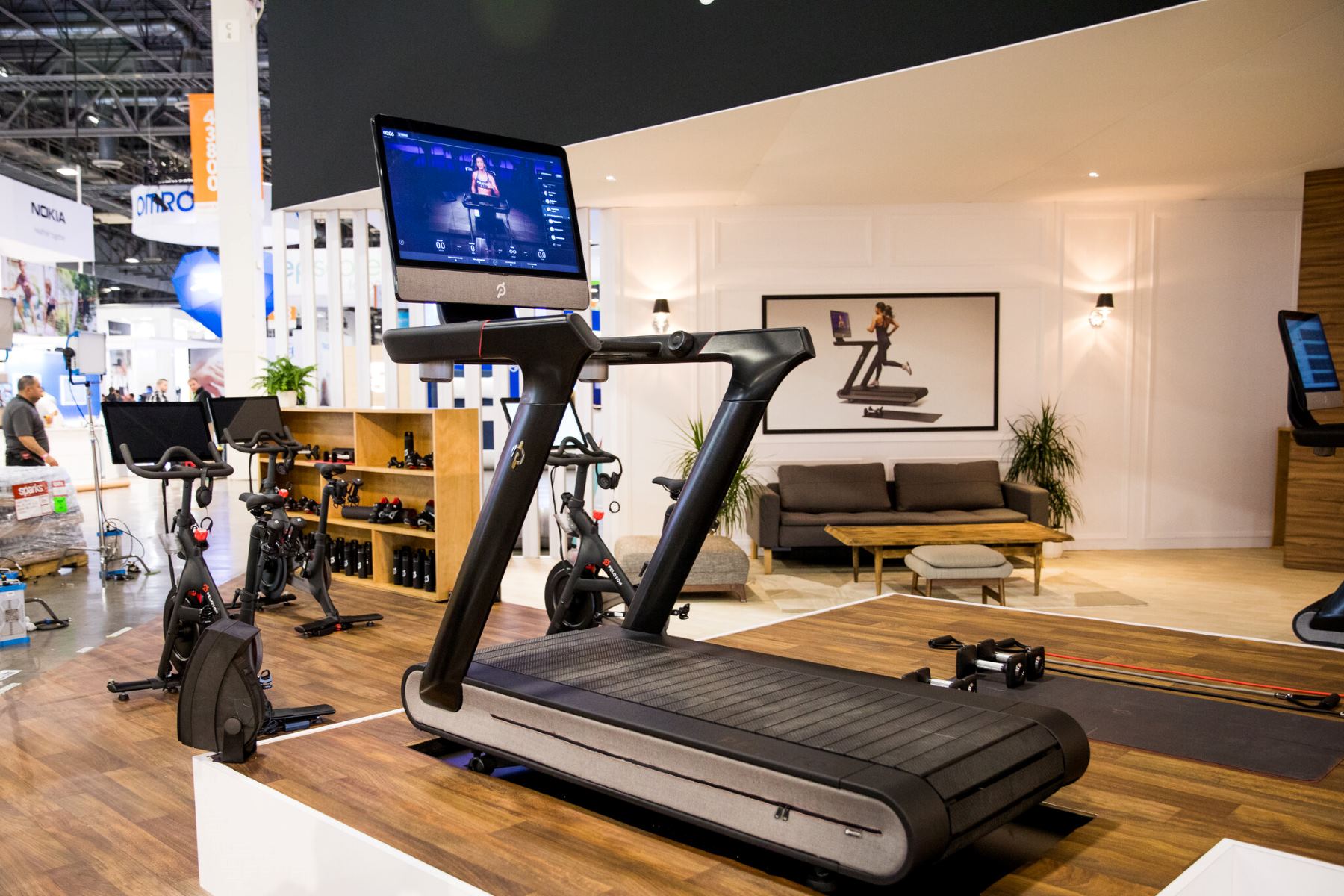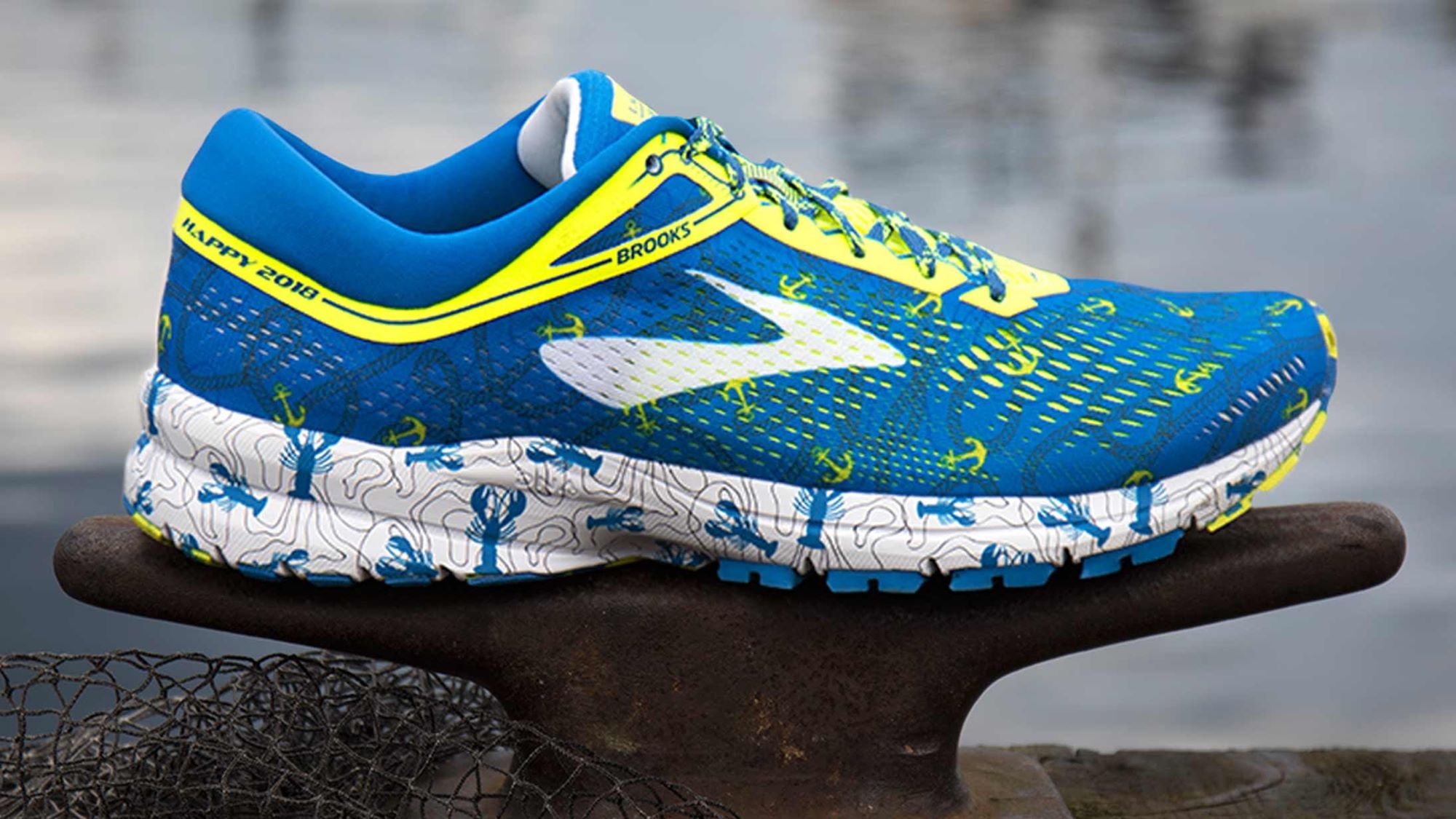

Featured
What Is The Offset On Running Shoes
Modified: August 18, 2023
Discover the benefits of featured running shoes with offset design. Learn how offset affects your running style and find the perfect pair for your needs.
Introduction
When it comes to running shoes, there are several factors to consider before making a purchase. One of the most crucial aspects to take into account is the shoe’s offset. But what exactly is the offset, and why does it matter?
The offset, also known as the heel-to-toe drop or simply the drop, refers to the difference in height between the heel and the forefoot of a shoe. It is typically measured in millimeters.
The offset plays a significant role in determining a runner’s biomechanics and overall running experience. It can affect the distribution of impact forces, foot strike pattern, and even muscle engagement during landing and toe-off.
Understanding the importance of offset and its impact on running mechanics is crucial for both seasoned runners and beginners looking for the right pair of shoes to enhance their performance and reduce the risk of injury.
As a runner, you may have noticed that some shoes have a higher heel than others, giving the appearance of a sloping profile when placed on a flat surface. This difference in height is what makes the offset unique to each shoe model.
The offset is not a one-size-fits-all concept. It varies from shoe to shoe and can range anywhere from zero drop – where the heel and forefoot sit at the same height – to a higher drop of 12mm or more.
Now that we have a general understanding of what the offset is, let’s delve deeper into its significance in running mechanics and how it can impact your overall running performance and comfort.
What is Offset?
The offset, also known as the heel-to-toe drop or simply the drop, is a measurement that indicates the difference in height between the heel and the forefoot of a running shoe. It is usually measured in millimeters and plays a crucial role in determining the overall feel and function of the shoe.
The offset value is determined by subtracting the heel height from the forefoot height. For example, if a shoe has a heel height of 25mm and a forefoot height of 15mm, the offset would be 10mm (25mm – 15mm = 10mm).
The offset affects the angle at which your foot strikes the ground. A higher offset means that the heel is elevated compared to the forefoot, resulting in a more pronounced slope or drop from heel to toe. Conversely, a lower offset means that the shoe has a more minimal drop or even a flat platform.
Traditionally, running shoes had a higher offset, with a significant drop from the heel to the forefoot. However, in recent years, there has been a shift towards lower offsets or even zero drop shoes, with the aim of promoting a more natural running gait and minimizing impact forces.
It’s important to note that the offset is just one aspect of a running shoe’s design. Other factors such as cushioning, stability, and flexibility also contribute to the overall performance and feel of the shoe. However, the offset specifically affects the biomechanics of how your foot interacts with the ground during the running gait cycle.
Next, let’s explore why the offset is important and how it can impact your running mechanics and overall running experience.
Importance of Offset in Running Shoes
The offset of a running shoe plays a significant role in determining the overall feel, comfort, and performance during your runs. Here are some key reasons why the offset is important:
- Impact Distribution: The offset affects how the forces generated during each foot strike are distributed. A higher offset encourages a heel-first or rearfoot strike, where the initial impact is absorbed by the cushioning in the heel. On the other hand, a lower offset promotes a more midfoot or forefoot strike, distributing the forces more evenly throughout the foot.
- Foot Strike Pattern: The offset can influence your natural foot strike pattern. A higher offset often leads to a more cushioned and comfortable ride for runners who tend to land on their heels. Conversely, a lower offset can encourage a more efficient and natural midfoot or forefoot strike, which may enhance agility and energy return.
- Muscle Engagement: The offset can impact muscle engagement during each stride. A higher offset tends to engage the calf muscles more, as the foot is positioned with the heel elevated. This can be beneficial for runners with weaker calf muscles or for those who require additional support in the rearfoot area. Alternatively, a lower offset promotes greater engagement of the muscles in the midfoot and forefoot, facilitating a more responsive and efficient push-off.
- Running Mechanics: The offset can influence your running mechanics by altering your body’s alignment and the angle at which your foot strikes the ground. This can affect factors such as pronation control, stability, and the overall transition from heel to toe during the gait cycle.
- Comfort and Injury Prevention: Selecting a running shoe with an appropriate offset for your individual biomechanics and running style can enhance comfort and reduce the risk of certain injuries. The right offset can help align your body properly and provide the necessary support and cushioning to minimize stress on joints, muscles, and connective tissues.
Considering the importance of offset in running shoes, it’s crucial to choose a shoe that aligns with your specific running mechanics, comfort preferences, and performance goals. The ideal offset for you will depend on various factors, including your foot strike pattern, running surface, and personal preference.
How Offset Affects Running Mechanics
The offset of a running shoe has a direct impact on your running mechanics, affecting the way your foot strikes the ground, the distribution of forces, and the muscle engagement throughout the running gait cycle. Here’s a closer look at how the offset can influence your running mechanics:
- Foot Strike: The offset can influence your foot strike pattern. A higher offset is typically associated with a heel-first or rearfoot strike, where the heel contacts the ground first. This is because the elevated heel encourages the foot to roll forward and absorb the initial impact through the cushioning in the heel. Conversely, a lower offset promotes a more midfoot or forefoot strike, where the foot lands with a flatter alignment and the forces are distributed more evenly across the foot.
- Ground Contact Time: The offset can affect the amount of time your foot spends in contact with the ground during each stride. In general, a lower offset tends to promote a quicker transition from initial contact to toe-off, as the foot is positioned in a more natural alignment. This can contribute to a more efficient running stride and potentially faster running times.
- Pronation Control: Pronation refers to the natural inward rolling motion of the foot during the stride to help absorb shock and adapt to uneven surfaces. The offset can influence pronation control by altering the angle at which the foot strikes the ground. A higher offset with a more pronounced heel drop can provide additional support and stability for runners who overpronate (excessive inward rolling). On the other hand, a lower offset allows for greater freedom of movement and may be suitable for runners with a more neutral or supinated foot strike.
- Muscle Engagement: The offset can impact the engagement of different muscle groups during running. A higher offset, with an elevated heel, tends to engage the calf muscles more as they absorb the initial impact. This can be beneficial for runners who require additional support in the rearfoot area or have weaker calf muscles. Conversely, a lower offset places more emphasis on the muscles in the midfoot and forefoot, promoting a more active push-off and potentially enhancing efficiency and speed.
- Alignment and Stability: The offset can contribute to the overall alignment and stability of your body during each stride. A higher offset can provide a sense of stability and encourage a more upright posture by positioning the foot with the heel slightly raised. This can be beneficial for runners who require additional support or prefer a cushioned feel. In contrast, a lower offset allows for a more natural alignment and may enhance proprioception and balance.
It is important to note that the ideal offset for each individual may vary depending on factors such as running style, biomechanics, foot anatomy, and personal preference. Experimenting with different offset ranges can help you determine the most suitable option for your unique running mechanics and performance goals.
Considerations for Choosing the Right Offset
Choosing the right offset for your running shoes is a crucial decision that can greatly impact your overall running experience. Here are some key considerations to keep in mind when selecting the offset that’s right for you:
- Foot Strike: Consider your natural foot strike pattern. If you tend to land on your heels, a higher offset with extra cushioning in the heel area may provide the shock absorption and comfort you need. If you’re a midfoot or forefoot striker, a lower offset or even a zero drop shoe can promote a more efficient and natural running gait.
- Running Surface: Consider the type of surfaces you usually run on. If you primarily run on soft, cushioned surfaces like trails or grass, you may feel more comfortable with a lower offset that allows for better ground feel and stability. Conversely, if you frequently run on hard, unforgiving surfaces like asphalt, a higher offset can provide additional cushioning and protection against impact forces.
- Biomechanics: Take into account your individual biomechanics and any specific issues or imbalances you may have. For example, if you tend to overpronate, a higher offset with added stability features may help control excessive inward rolling. On the other hand, if you have a more neutral or supinated foot strike, a lower offset or a more flexible shoe may be suitable for promoting natural movement.
- Training Goals: Consider your training goals and the type of running you plan to do. If you’re a long-distance runner aiming for endurance, a higher offset with ample cushioning may provide the necessary comfort for extended periods. If you’re focused on speed or racing, a lower offset that promotes a more efficient stride and faster transitions may be preferable.
- Personal Preference: Ultimately, personal preference plays a significant role in choosing the right offset for your running shoes. Try on different shoes with various offsets and pay attention to how they feel during a test run. Listen to your body and go with the option that feels the most comfortable and natural for your running style.
Remember that finding the perfect offset may require some trial and error. It’s worth consulting with a knowledgeable running specialist or visiting a specialty running store where experts can assist you in selecting the appropriate shoe with the right offset for your needs.
Common Offset Ranges in Running Shoes
Running shoes come in a variety of offset ranges, each offering a unique feel and addressing specific running needs. Here are some of the common offset ranges you’ll come across when shopping for running shoes:
- Zero Drop: Zero drop shoes have an offset of 0mm, meaning that the heel and forefoot are at the same height. These shoes aim to mimic a barefoot running experience and promote a more natural foot strike pattern. Zero drop shoes can encourage a midfoot or forefoot strike and provide a good ground feel. They are often preferred by experienced runners or those transitioning to minimalist running.
- Low Offset: Shoes with a low offset typically range from 2mm to 4mm. These shoes offer a minimal drop and encourage a more midfoot or forefoot strike. They provide a balance between ground feel and cushioning, making them suitable for runners who prefer a more natural running experience, but still desire some degree of protection and comfort.
- Medium Offset: Shoes with a medium offset usually fall within the range of 6mm to 8mm. These shoes strike a balance between cushioning and a gradual slope from heel to toe. They are versatile options that can accommodate different foot types and running styles. Many neutral running shoes fall into this offset range.
- High Offset: Shoes with a higher offset typically range from 10mm to 12mm or more. They have a significant drop from the heel to the forefoot, offering greater cushioning and a more pronounced slope. High offset shoes are commonly favored by runners who prefer a more cushioned feel, especially those who land on their heels or require extra support and shock absorption.
It’s important to note that these offset ranges are not fixed and can vary slightly between different shoe models and brands. Some shoes may also have variable offsets, with different values for men’s and women’s versions to accommodate gender-specific biomechanical differences.
Choosing the right offset range depends on your individual preferences, running style, and biomechanics. Experimenting with different offsets can help you determine the most comfortable and suitable option for your needs.
Pros and Cons of Higher and Lower Offsets
Both higher and lower offsets in running shoes have their own advantages and disadvantages, which should be considered based on individual preferences and running needs. Here’s a breakdown of the pros and cons of higher and lower offsets:
Higher Offsets
Pros:
- Ample Cushioning: Higher offset shoes generally offer more cushioning in the heel, providing enhanced shock absorption and comfort, especially for runners who heavily rely on heel striking.
- Added Support: The elevated heel in higher offset shoes can provide additional stability and support for runners who overpronate or have weaker calf muscles.
- Smooth Heel-to-Toe Transition: The gradual slope from heel to toe in higher offset shoes promotes a smoother transition during the gait cycle and may provide a more consistent running experience.
Cons:
- Less Ground Feel: The higher drop in these shoes can result in reduced ground feel, making it more challenging to gauge and adjust to different running surfaces.
- Heel Reliance: Higher offsets can encourage heel striking, which may lead to increased impact forces and potential strain on the knees and joints.
- Less Natural Foot Position: The elevated heel can alter the natural alignment of the foot and potentially affect the engagement of certain muscles, leading to a less natural running experience.
Lower Offsets
Pros:
- More Natural Foot Position: Lower offset shoes allow for a more natural foot position, promoting a midfoot or forefoot strike that can enhance running efficiency and reduce the risk of certain injuries.
- Improved Proprioception: The lower drop provides better ground feel, allowing runners to have a greater sense of their foot placement and make more precise adjustments on varied terrain.
- Engagement of Forefoot Muscles: Lower offset shoes encourage greater engagement of the muscles in the midfoot and forefoot, potentially leading to increased propulsion and speed.
Cons:
- Reduced Heel Cushioning: Lower offset shoes typically have less cushioning in the heel, which may be less forgiving for runners who heavily rely on heel striking or require additional shock absorption.
- Increased Calf and Achilles Strain: The flatter alignment in lower offset shoes can put more strain on the calf and Achilles tendon, requiring a gradual transition and adaptation period.
- Less Stability for Pronation Control: Runners with overpronation may require additional stability features that are often more prevalent in higher offset shoes.
Considering both the pros and cons of higher and lower offsets can help you make an informed decision based on your running style, biomechanics, and personal preferences.
How to Determine the Ideal Offset for You
Choosing the ideal offset for your running shoes can have a significant impact on your comfort, performance, and injury prevention. While there is no one-size-fits-all answer, here are some steps you can take to determine the ideal offset for your specific needs:
- Assess Your Foot Strike: Take note of your natural foot strike pattern during your runs. Are you a heel striker, a midfoot striker, or a forefoot striker? Understanding your foot strike can help guide your offset selection.
- Consider Your Biomechanics: Assess your foot arch type, pronation tendency, and any other biomechanical factors that can influence your running mechanics. If you overpronate, a higher offset with stability features may be beneficial. If you have a neutral foot strike or supination, a lower offset or more flexible shoe may be suitable.
- Seek Professional Advice: Visit a specialty running store and consult with knowledgeable staff who can analyze your gait, foot structure, and running mechanics. They can provide expert guidance on suitable offset ranges for your specific needs.
- Gradual Transition: If you are considering a significant change in offset, such as switching from a higher offset to a lower one, it’s important to make a gradual transition. Start with shorter runs in the new shoes and gradually increase the mileage as your body adjusts to the different mechanics and demands of the lower offset.
- Listen to Your Body: Pay attention to how your body responds to different offsets. Take note of any discomfort, pain, or changes in running mechanics. If a specific offset feels uncomfortable or causes issues, it may be a sign that it’s not the right fit for you.
- Experiment and Test: Trying out different offsets and shoe models can be a valuable way to determine what works best for your body and running style. Go for test runs in different shoes with various offsets, and pay attention to how each shoe feels in terms of cushioning, stability, and overall comfort.
Remember that finding the ideal offset may require some trial and error. It’s essential to consider multiple factors, such as foot strike, biomechanics, and personal comfort, when making your decision. Taking the time to find the right offset can greatly enhance your running experience and help support your long-term running goals.
Conclusion
Choosing the right offset for your running shoes is a crucial decision that can greatly impact your running mechanics, performance, and overall comfort. Understanding the offset and its significance in running can guide you in finding the ideal shoe for your individual needs.
Higher offsets provide more heel cushioning and stability, making them suitable for runners who prefer a cushioned feel or who heavily rely on heel striking. On the other hand, lower offsets promote a more natural foot position, encourage a midfoot or forefoot strike, and often offer better ground feel, making them ideal for runners seeking a more efficient running gait or those transitioning to minimalist running.
When determining the ideal offset for you, consider factors such as your foot strike pattern, biomechanics, running surface, and personal preferences. Seek professional advice from experts who can assess your running mechanics and recommend suitable shoe options. Gradually transition to new offsets to allow your body to adapt, and listen to your body’s feedback to ensure a comfortable and injury-free running experience.
Remember, no single offset is perfect for everyone. What works for one runner may not work for another. Be open to experimentation and finding the offset that feels most natural, supportive, and comfortable for your own unique running style.
Ultimately, when you find the right offset in your running shoes, you can optimize your running mechanics, enhance your performance, and reduce the risk of injuries, allowing you to enjoy every stride on your running journey.









